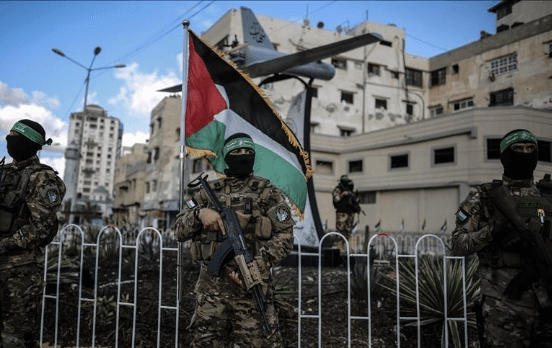Map:_Vnnhnt2rgs= Hamas

The map titled “Map:_Vnnhnt2rgs= Hamas” serves as a critical tool for analyzing the intricate dynamics of Hamas’s operations within the Gaza Strip. By illustrating key locations such as tunnels and command centers, it sheds light on how geography influences military strategy and regional security. This representation raises important questions about the implications for international relations and the ongoing conflict. As one contemplates the strategic significance of these geographical elements, the broader consequences become increasingly apparent, prompting further inquiry into the evolving landscape of the conflict.
Historical Context of Map:_Vnnhnt2rgs= Hamas
The historical context of Map:_Vnnhnt2rgs= Hamas is rooted in the socio-political landscape of Palestine and the broader Middle East.
Emerging in the late 1980s, Hamas origins can be traced to the Muslim Brotherhood’s ideological foundations, emphasizing resistance against occupation and advocating for Islamic governance.
This framework has shaped Hamas’s strategies and policies, influencing its role within Palestinian society and the ongoing Israeli-Palestinian conflict.
Read More Clipart:3xsk0s-Ffzq= Beach Ball
Key Geographical Locations
Map:_Vnnhnt2rgs= Hamas operates primarily in the Gaza Strip, a densely populated coastal enclave that has become a focal point of the Israeli-Palestinian conflict.
Within this territory, Hamas has developed an extensive military infrastructure, including tunnels, command centers, and weapon storage facilities.
The geographical features of the Gaza Strip significantly influence the group’s operational capabilities and its ongoing confrontations with Israeli forces, shaping the regional dynamics.

Strategic Movements and Operations
Strategic movements and operations conducted by Map:_Vnnhnt2rgs= Hamas are intricately linked to the group’s adaptation to the unique challenges posed by the Gaza Strip’s geography and the ongoing conflict with Israel.
Tactical advancements aim to exploit vulnerabilities, while operational challenges include resource limitations and countermeasures by Israeli forces.
This dynamic necessitates constant reevaluation of strategies to maintain operational effectiveness in a complex environment.
Geopolitical Implications and Reactions
Ongoing strategic movements and operations within the Gaza Strip have significant geopolitical implications, influencing regional stability and international relations.
The evolving dynamics affect diplomatic relations among key players, reshaping regional alliances. Nations are compelled to reassess their positions, balancing support for sovereignty and human rights against geopolitical interests.
Read More How to Speak Art: Understanding Its Language, Issues, and Themes Julia C. Fischer Pdf Free Download
This delicate interplay shapes the future of conflict resolution and peace processes in the Middle East.
Conclusion
The mapping of Map:_Vnnhnt2rgs= Hamas geographical influence within the Gaza Strip reveals critical insights into its operational strategies and military infrastructure. While some may argue that such maps oversimplify complex conflicts, they serve as essential tools for understanding the intricate dynamics of regional power struggles. By highlighting key locations and strategic movements, this analysis contributes to a more nuanced comprehension of the ongoing conflict and its broader implications for regional stability and international relations.



